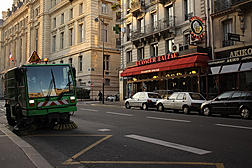I went to the senior school, Sharmans Cross, a large secondary modern school in Shirley Solihull in September 1958. To get to a secondary modern you had to fail your 11 plus which I did, but I soon got over the disappointment although remained jealous of my pal from across the street who not only passed but his parents rewarded him with a new bike with deraillure gears!
It was a large school with over 900 pupils, all boys and as I was a baby boomer the new first year was very large, with classes 1A1, 1A-Inter, 1A2, 1B1, 1B2, 1C, 1D, 1E, each with 38 boys. I was in 1A1.
So how was this school run? Basically by the slipper and cane. The slipper was the sole of a size 10 plimsoll, or pump as it was called locally, and administered by any teacher for lesser misdemeanours in blows of 1 to 4 across the backside. For more serious offences the cane was used up to six of the best.
Even before I went to the school I knew of this as my brother, 7 years older than me, had already experienced these. I vividly remember seeing him in the bath when he was 14 or so with big blue wheals across his behind. He had been in trouble over something or other and for punishment the teacher had told him to carry all the chairs and desks out of the classroom.
"You must think I'm a bloody fool to expect me to do that!" and for saying this he was rewarded with six of the best.
The same teacher was to teach me science later on and he had not mellowed much, but I will expand on this in a later post.
Before my first day my brother told me that at some time a teacher would ask for volunteer to be caned and I should volunteer because afterwards I would never fear being caned again.
In one of the early days 1A1 was in the Art Room. The Art Teacher walked up and down between the desks looking at our work. He carried his 1 meter long cane with him, on the top he had pushed a plastic Jiffy Lemon with which he use to "playfully" strike us over the head as the fancy took him.
In the front row a boy had dipped his brush into a colour at random and splodged it over his paper.
"What do you call that?" shouted the teacher.
"I call it 'All Colours', sir."
Obviously not impressed by the abstract side of painting "Get out to the front" he barked "and bend over! "
He rotated the cane over so that the Jiffy Lemon was above his hand and gave the budding artist two swipes.
"Anyone like to volunteer for the cane?" he asked after the boy had sat down.
Remembering my brother's advice my hand shot up, "Yes please sir" to everybody's astonishment, including myself, I called out.
So he ordered me out and repeated the punishment on me. Well I immediately began to doubt the advise once I felt the pain but on balance I think it did remove the fear as there were many times I received the cane there after.
Now this may all sound at best silly and at worse brutal, but it was a good school with great repartee between teachers and pupils, and if we took it too far then one or several or even the whole class would be slippered or caned and the balance restored. Anyway that was the view from the A1 stream, not sure how the C, D and E streams faired.
Still I would not be happy now for the same treatment to be handed out to my grandchildren.

